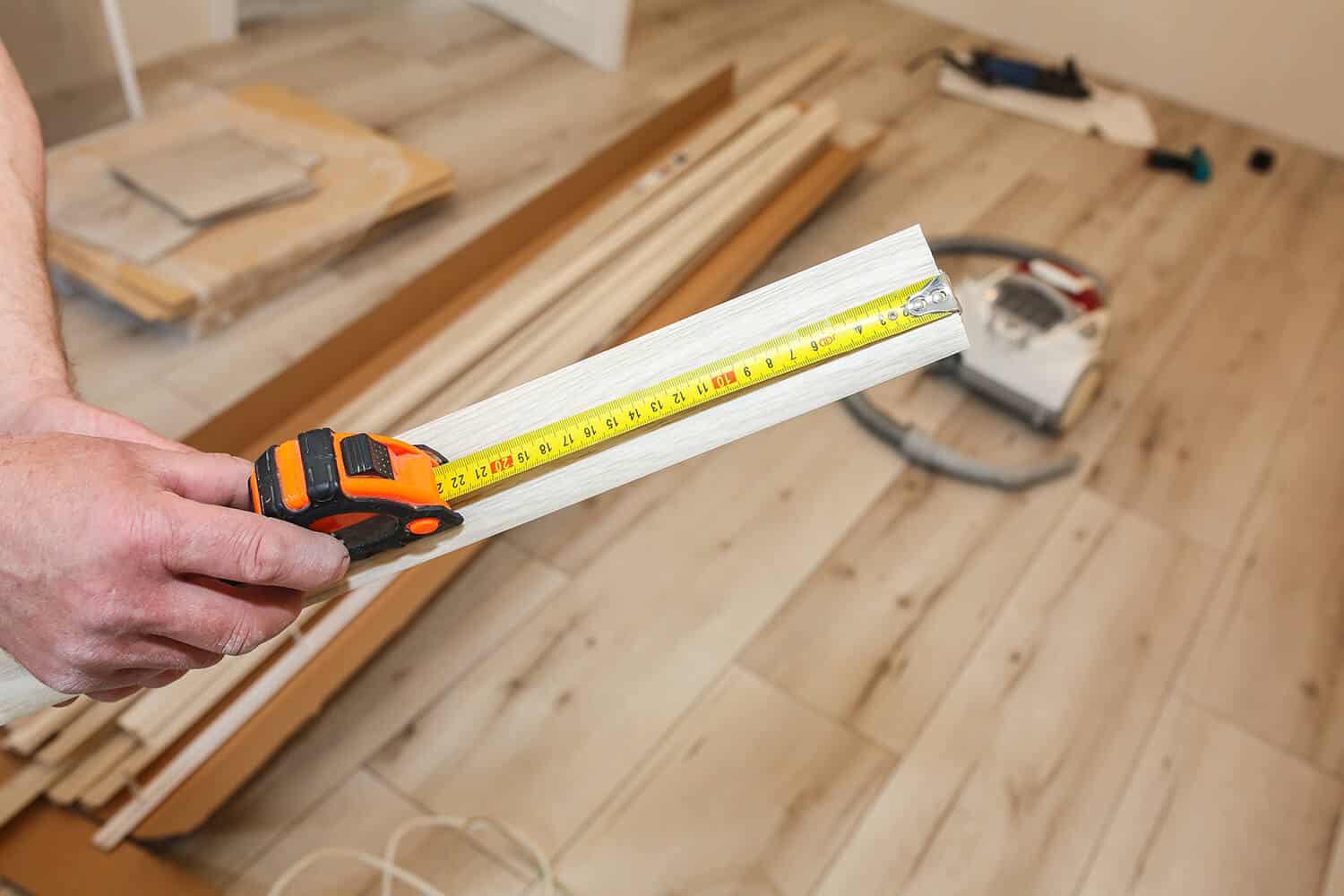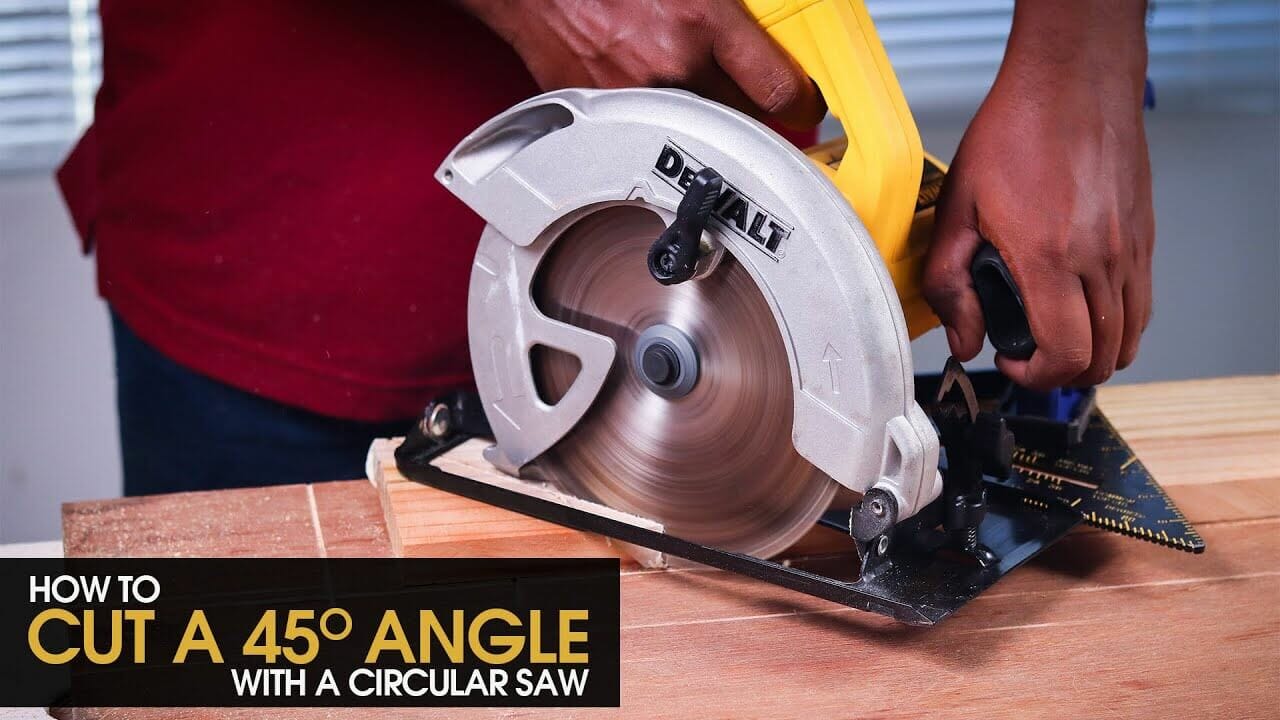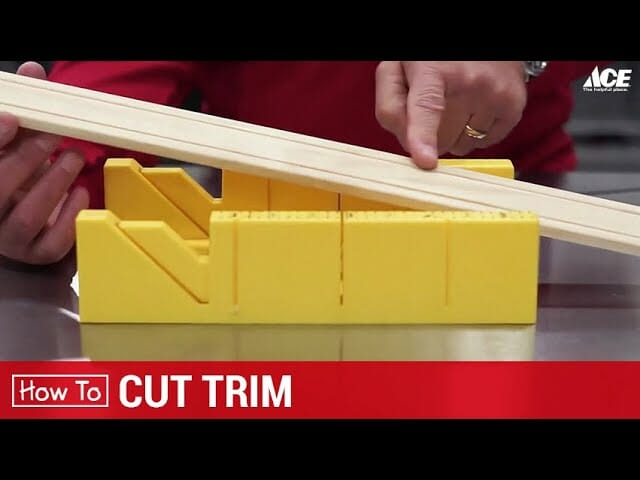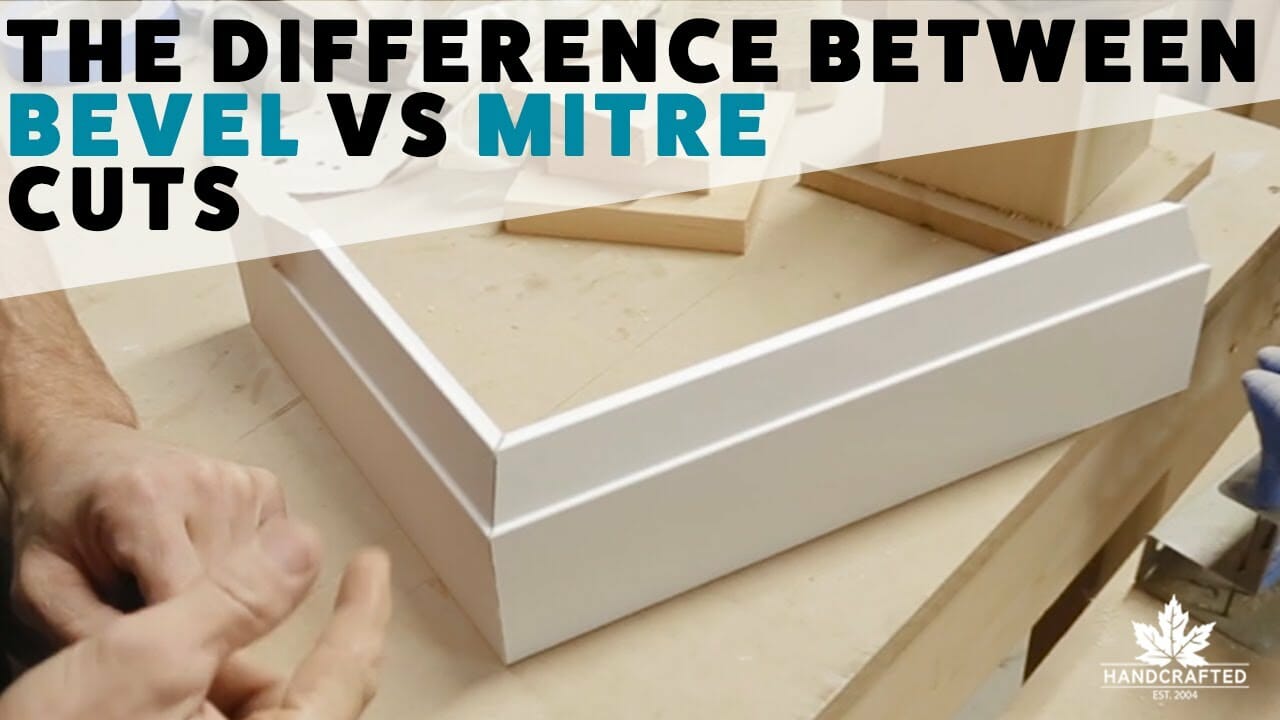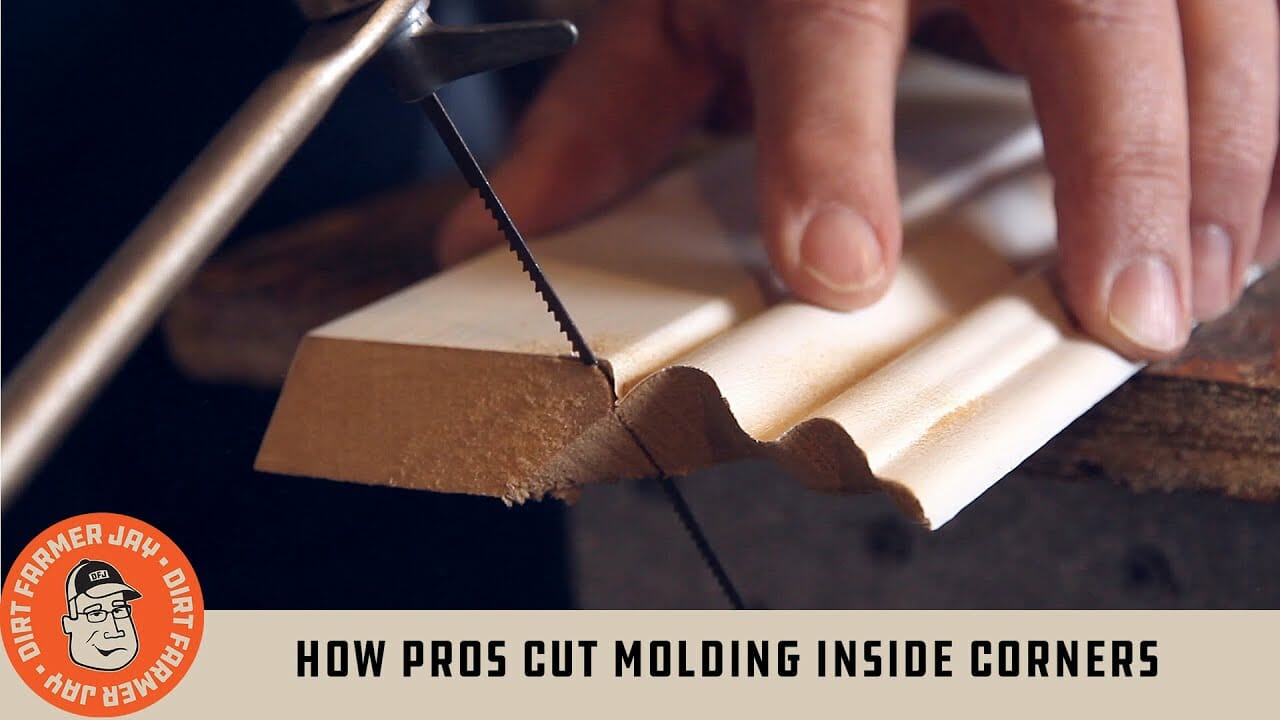How to Cut Baseboard Corners Without a Miter Saw?
There are several methods you can use to cut baseboards, and each of them requires a different tool for cutting molding, whether it be your standard baseboards or crown molding.
Since you can choose from multiple different tools to achieve this, it should be easier for you to replace a miter saw and use something like a hand saw, jigsaw, or a regular circular saw for cutting pieces of molding, whether it be basic molding joints or a more precise angle cut.
If you have any of these tools, you’re good to go. Even if you don’t, they’re much cheaper than a miter saw, but understand, buying a compound miter saw will make any trim job much easier.
How to Cut Baseboard Corners with a Circular Saw
Let’s start with the trusty circular saw. A circular saw is a versatile tool that can be used to cut pieces of trim for both molding joints or a specific angle cut by adjusting the angle bracket of the circular saw.
You can cut both wide or low profile baseboards using both square and straight bevel cuts, and this tool is perfect for it.
Follow these steps:
Step 1
First, you need to drill four nail holes with the pivot bit in every corner-block trim piece. Place two holes at the top and bottom, all the way, in every direction. Make sure the holes aren’t too close to each other.
Step 2
Next, place a block in one corner of the room. Put a level next to it, making sure it’s straight. Use a hammer to put trim nails through the holes on each exposed side of the block, right into the wall behind it, providing stability.
Step 3
Then, sink the nail heads using a nail set. Repeat the steps until you have mounted corner blocks in every corner of the room.
Step 4
Use a tape measure to measure in between two corner blocks, from their inside edges. Then use a pencil to mark the longer piece of trim. Place another mark several inches away from the end of the trim, to make another mark, starting the measurement from there.
Step 5
On both marks, mark straight lines across the trim. Ensure that the lines are completely square using a try square.
Step 6
Using a circular saw, cut the trim gently alongside the two lines, and if your circular saw is equipped with a laser-guided sight, now is the time to make use of it.
Step 7
Put the cut trim in between the corner blocks, making sure the square ends of the trim face against each other at the block sides. Drill in pilot holes at 15 inches along the lower and upper edges of the trim piece.
Step 8
Place the finish nails with a hammer. Use a nail set to sink the heads below the surface. Repeat this for every part of the wall between every corner block.
How to Cut Baseboard Corners with a Hand Saw
If you don’t have a circular saw, don’t worry. You can still cut baseboard corners using a hand saw and a miter box, instead of forking out the cash for a circular saw or a high-priced sliding compound miter saw.
However, you’ll need some glue, an adjustable bevel, some wood screws, a screwdriver, a carpenter’s square, and 1×6 and 1×4 lumber.
Follow the instructions closely:
Step 1
Cut two 12-inch lengths of 1×6 lumber and a 12-inch length of 1×4 lumber. The type of wood doesn’t matter, but if you can, get oak or fir. It’s more important to get wood that is warp-free, and completely straight.
Step 2
Apply wood glue along the two long edges of the 1×4 lumber and place it flat on the work table. Place the 1×6 lumber upright against every edge and use a screwdriver and ½ wood screws to screw the 1×6 in the 1×4 lumber. When finished, you’ll have a four-inch open box.
Step 3
Place the bevel at 45- degrees and mark the top edge angles on the two sides of the box with a pencil. Use a carpenter’s square to draw a perpendicular line on the outside of the box, from the angled line intersection to the bottom of the makeshift box.
Step 4
Align your handsaw with the angled marks at the boxes’ top edges, and cut through the sides top to bottom. Make sure the ends of the hand saw are aligned to the perpendicular lines on the side.
Step 5
Using the box and the handsaw to cut the baseboard. Keep the baseboard up against the side of the box, using the mark on the baseboard to show you the length of the kerf in the box. Hold the saw within the kerf as you cut the baseboard.
Note, ff this is too complicated for you, simply buy a miter box at a supply store that can produce similar results to using a miter saw, but without the added financial investment.
How to Cut Baseboard Corners with a Jigsaw
Yes, a miter saw is better for cutting and installing baseboards or crown molding, but you can also use a jigsaw if you don’t have another way to cut baseboard corners or crown molding.
Jigsaws are most certainly cheaper than the average dual bevel miter saw, and maybe you have one in the shed already.
You can make three types of cuts when cutting any kind of trim such as baseboard or crown molding.
You can use the miter cut, the scarf cut, or the coping cut. While using a jigsaw to cut a baseboard corner or crown molding is rather difficult, it can be done with a high-speed jigsaw model with an adjustable speed setting.
It should have at least 10, if not 15 blade teeth. You need a pencil, a speed square, and a tape measure for making more precise cuts. If you want to make coped joint cuts or coping corner cuts, you’ll need a coping saw too, or you can simply tilt the jigsaw to the side when attempting a coping cut.
Keep in mind though, that regardless if you’re working with a jigsaw or a coping saw, the latter will take some practice, especially if you’re working with crown molding.

How to Straight and Miter Cut
Follow the steps to make a miter cut using a baseboard or crown molding using a jigsaw:
Step 1
Use a tape measure to measure the baseboard from one end to the cutting point. Mark the cut point using a pencil. Use a speed square to mark the cutting line.
Step 2
Pick up the jigsaw (with the right blade attached), and place it so the blade is on the waste side of your cutting line. The shoe should be resting flat on the baseboard. Ensure that the baseboard is secured, but with enough leeway for the blade off the bench or the floor.
Step 3
Turn the switch on and let the jigsaw reach full speed. Slowly ease it onto the baseboard. Guide the blade until you finalize the cut. Optionally, you can guide the shoe with a speed square.
How to Cut Coped Joints
This method is much harder than a miter cut. Still, it provides a better fit, so it’s definitely worth the effort. A baseboard serves as a half of a coped corner, which fits flat against the wall, without bevel, and the jigsaw is the perfect tool for this cut.
Follow the steps to cut a coped joint or coping corner cut joints:
Step 1
First, you need to cut the baseboard in length, using a bevel cut would be best, so it exposes the grain end of the baseboard. That way, the jigsaw has more working material.
Step 2
After that, you need to do a back-cut using the jigsaw, alongside the decorative baseboard’s curve.
Step 3
Then, ensure the workpiece is safely clamped down on a bench, ideally by making use of a bench vise.
Step 4
Make a curved, 45- degrees angle cut with the jigsaw, to the baseboard’s backside, alongside its surface.
Step 5
Use sandpaper to finish or file the baseboard. Make sure the other corner fits as well. Ensure that the socket from the back cut is fitting the face of the other side of your baseboard.
Step 6
Use some brad nails measuring around 1 1/2 inches (with some glue) to install and secure the baseboard securely.
Step 7
Finally, add paint and caulking around any slight gaps or joints if necessary to pretty your new trim up.
How to Cut a Scarf Joint
A scarf joint is similar to a coped corner because it merges two baseboard pieces to extend them. This is also done for better fitting if it is slightly more difficult than the previous methods.
Here’s how to do a scarf joint:
Step 1
Do two opposing bevel cuts on two baseboard pieces that you will merge together. These cuts can be at 45-, or 22.5- degrees angles in opposite directions. Just set the shoe of your jigsaw to the right angle and make the cut.
Step 2
Plan ahead, so that the joint overlaps a wall’s stud, so you can nail the two sides for extra security into your walls effectively.
Step 3
Next, you’ll want to use some glue and finishing nails to install the baseboard to your walls as we mentioned before.
Step 4
Apply the caulk to the seams and let the joint set. It’s important to let any joints set to prevent expansion.
Step 5
Finally, lightly sand the boards if need be for a fine finish and apply some paint to the baseboard, if you like it so.
In Conclusion
That is how to successfully cut baseboard molding, whether it be your standard baseboard or crown molding without using a miter saw. See, you don’t need a miter saw to make these cuts, albeit you’d have a much easier time with it cutting any molding or type of baseboards.
You can use a hand saw and a miter box, which is probably the hardest as you’re also going to have to make the miter box. Plus using a hand saw is rather time-consuming when it comes to coped or scarf joints.
The circular saw and jigsaw methods are easier – if you have these tools, you’re in luck.
With the jigsaw, you have a big variety of cuts, and when you get familiar with them, you’ll make some pretty sweet finishes for your baseboards or crown molding, making installing them much easier.
Keep in mind though, if you plan on installing a significant amount of trim molding or something more complicated such as crown molding, personally, I’d bite the bullet and buy a sliding compound miter saw. Again, this really depends on your workload and deadline.

